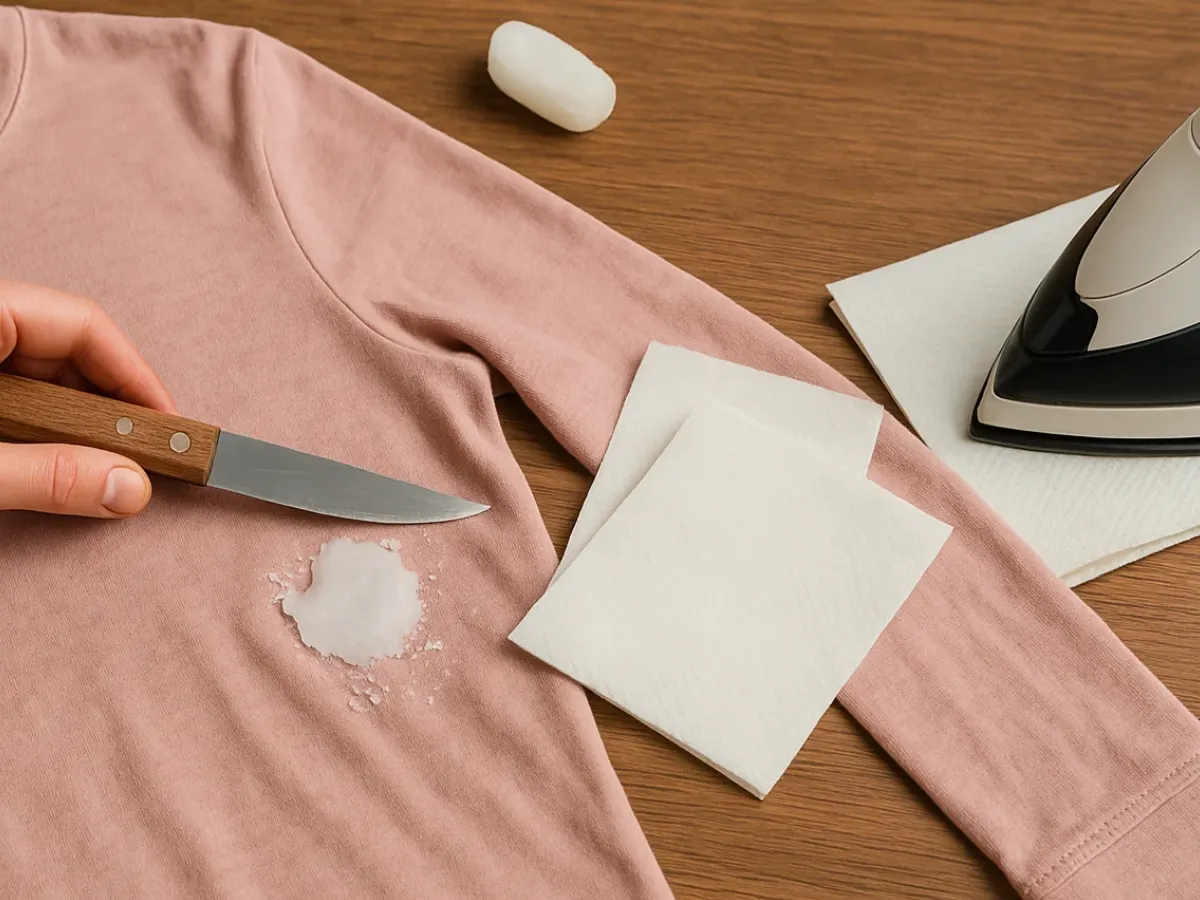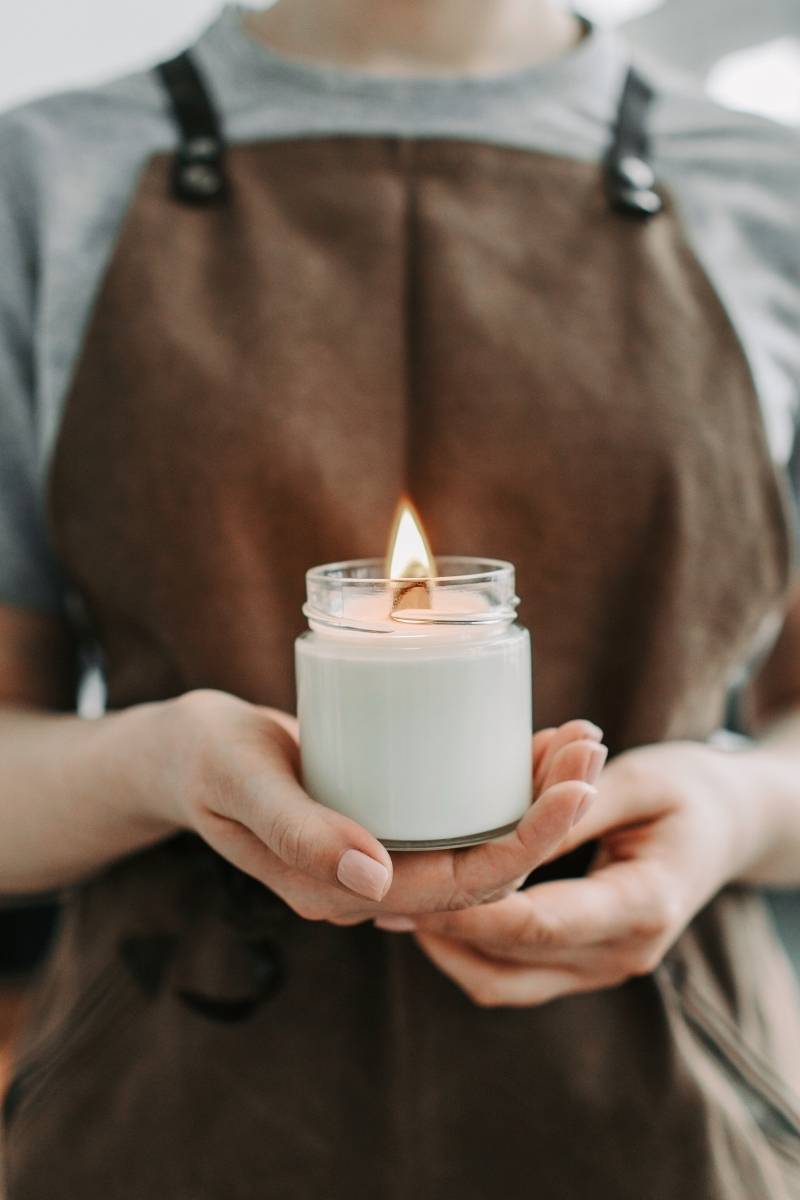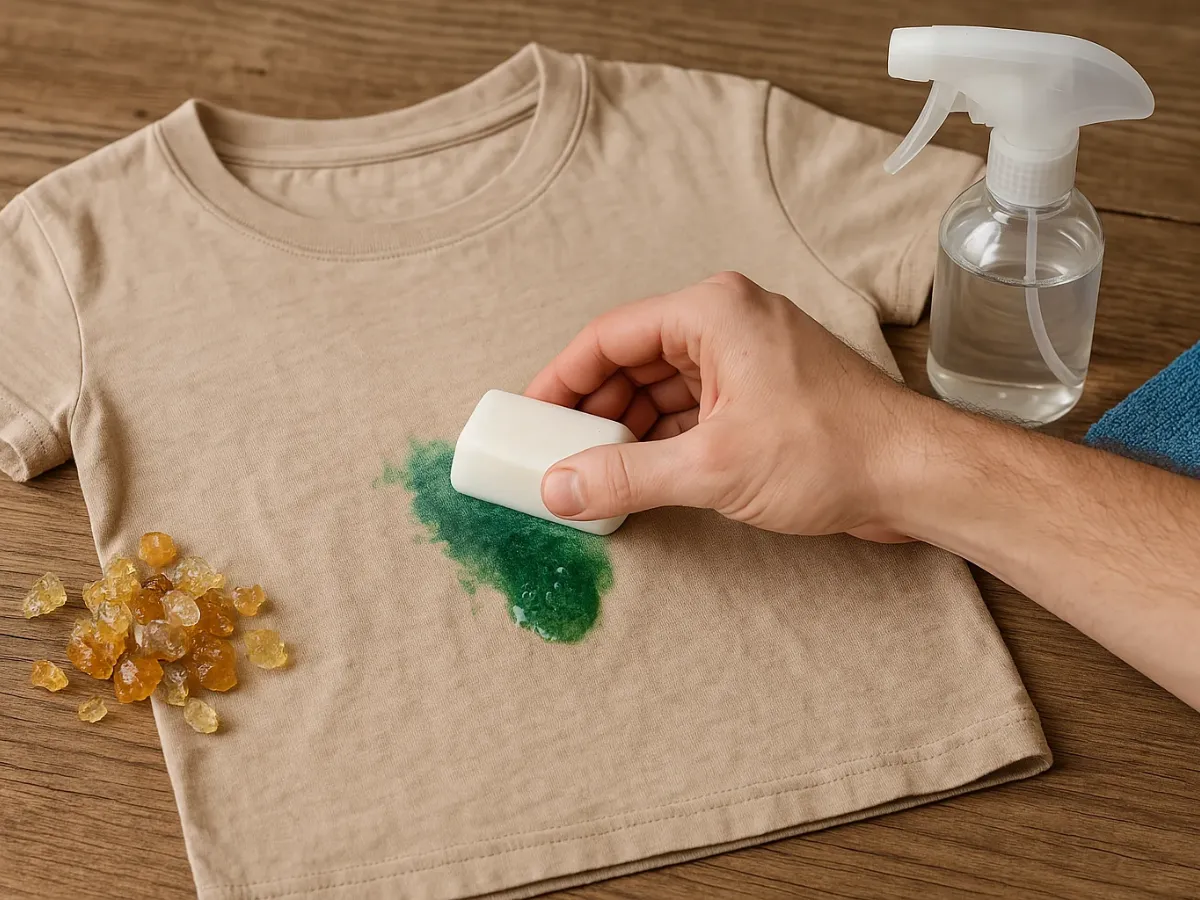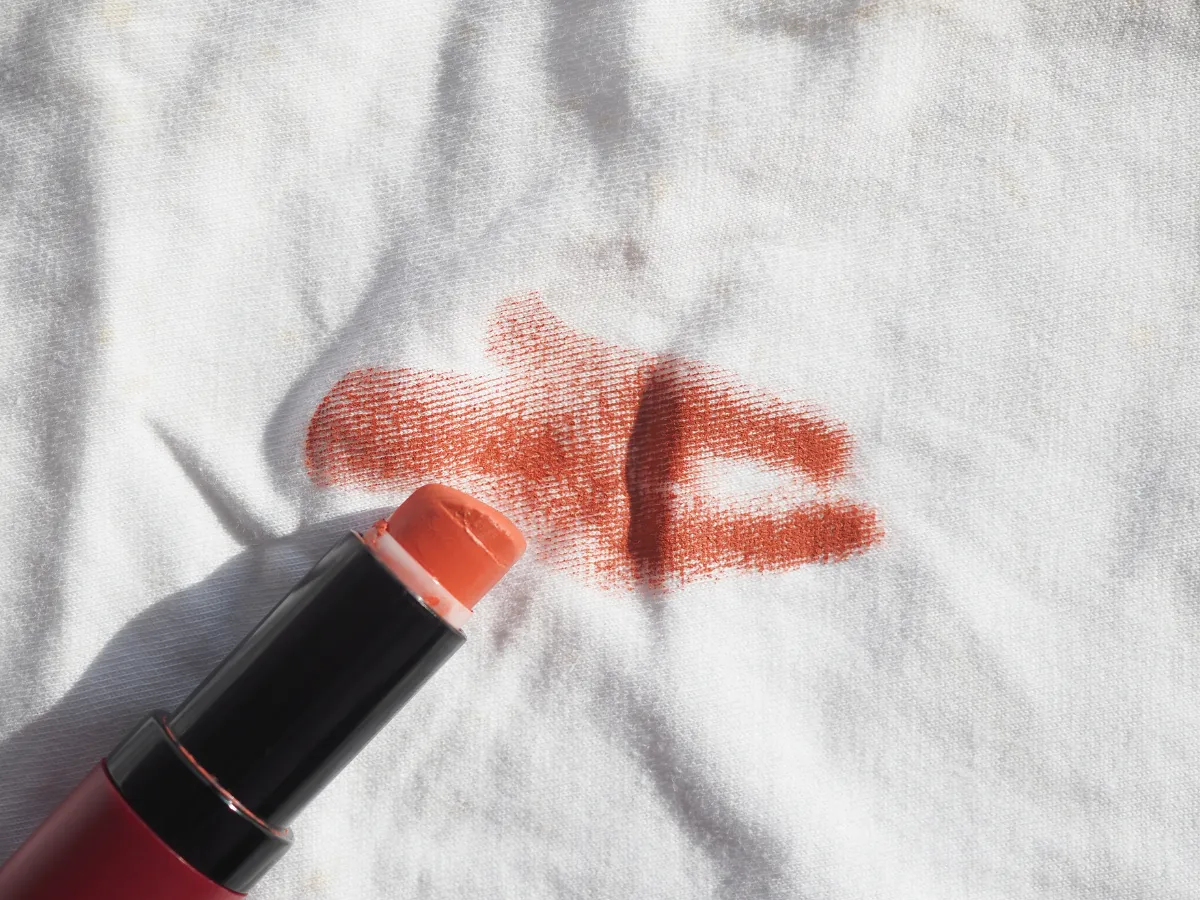Goodbye Wax Stains! How to Easily Remove Wax from Clothes (Candles, Hair Removal...)

A romantic candlelit dinner, a home waxing session, a small craft accident... Wax, in its many forms, has a special knack for ending up where it shouldn't, especially on our clothes! When hot wax drips onto fabric, it cools quickly, solidifying and clinging to the fibers. Trying to just pull it off can seem like mission impossible, and if not done correctly, it can leave a greasy stain or even damage the garment. But don't worry! Learning how to remove wax from clothes is simpler than it appears.
Whether it's candle wax (white or colored) or hair removal wax, several highly effective home methods exist to remove it completely. In this detailed guide, we'll explain the most popular and safest technique (the iron method!) step-by-step, along with other tricks to leave your clothes wax-free and spotless.
The Nature of the Problem: Solid Wax and Greasy Residue
To remove it effectively, you need to understand the two components of the problem:
- Solidified Wax: The main mass of wax that has hardened on and between the fibers.
- Greasy/Oily Residue: Even after removing the solid part, wax (especially candle wax or some hair removal waxes) leaves a translucent, oily-looking stain due to its fatty components.
- Pigment (in Colored Wax): If the wax had dye, it might have stained the fibers, adding a third challenge.
The ideal method must address all these aspects.
Fundamental Step 1: Let it Harden and Scrape!
The first and most important thing is NOT to try cleaning the wax while it's hot or soft. You'll only spread it and make it penetrate deeper into the fabric.
- Wait for it to Solidify: Let the wax cool and harden completely. You can speed up the process by placing the garment in the freezer for about 15-30 minutes or applying a bag of ice cubes over the stain (place a thin cloth between the ice and the fabric to avoid getting it too wet).
- Scrape Off Solid Excess: Once hard, the wax becomes brittle. Very carefully, use the dull edge of a knife, a spatula, a spoon, or the edge of a credit card to scrape and lift off as much solid wax as possible. Try to break the wax layer and remove it in pieces. Do this gently to avoid damaging the clothing fibers.
This step removes the bulk of the problem, but residue embedded between the fibers and a greasy stain will almost always remain.
Step 2: The Foolproof Iron and Absorbent Paper Method
This is the most effective and popular home remedy for removing embedded wax residue and some of the greasy remainder.
Materials Needed:
- Clothes Iron: With an empty water reservoir (no steam!).
- Absorbent Paper: Paper towels, blotting paper, brown paper bags (like bread bags, without ink or plastic lining), or even thick toilet paper. You'll need several clean sheets.
- Ironing Board or Protected Flat Surface: Cover the surface with an old towel in case anything seeps through.
Step-by-Step Procedure:
- Prepare the "Sandwich": Place one or two layers of clean absorbent paper on the ironing board. Lay the stained area of the garment on top of this paper. Place another layer (or two) of clean absorbent paper over the wax stain. You should have: Paper - Garment (stain facing up) - Paper.
- Set the Iron: Turn the iron on to a low or medium temperature setting (cotton/linen if sturdy, synthetics/delicate if more sensitive). It's crucial that you DO NOT use the steam function. Water would hinder wax absorption. If unsure about the temperature, start low and test on an inconspicuous area of the garment.
- Gentle Ironing: Pass the warm iron (without pressing too hard) over the top absorbent paper, directly above where the wax stain is. The heat will melt the wax embedded in the fibers.
- Magic Absorption: You'll see the absorbent paper (both top and bottom) start to "soak up" the melted wax, leaving a translucent stain on the paper.
- Change Paper Constantly: Lift the iron and check the paper. As soon as you see it has absorbed wax, replace it with clean sheets both above and below. Using clean paper is essential for it to continue absorbing effectively.
- Repeat the Process: Continue ironing gently over clean paper and changing it until the paper no longer absorbs any more wax. You'll know you're done when ironing over clean paper leaves it clean.
This method usually removes most of the visible embedded wax.

Step 3: Treat the Residual Grease Stain
Even after removing the wax, a greasy or oily-looking halo is very likely to remain, especially from candle wax.
- Apply Stain Remover or Detergent: On the residual stain, apply:
- A pre-wash stain remover specifically for grease.
- Liquid laundry detergent directly onto the stain.
- Liquid dish soap (very good at cutting grease).
- Rub Gently: Massage the chosen product into the stain with fingers or a soft brush.
- Let Sit: Wait about 5-15 minutes for the product to penetrate and dissolve the grease.
If the grease stain is very persistent, consult our tricks for removing oil stains.
Step 4: Final Wash in the Machine
It's time to wash the entire garment to remove any remaining wax, grease, and cleaning product residues.
- Water Temperature: Wash the garment at the highest temperature recommended by the label that is safe for the fabric. Hot water helps remove the last traces of grease.
- Detergent: Use your regular detergent.
- Crucial Check: Before putting the garment in the dryer or ironing it, carefully inspect the stained area to ensure it's completely gone. If any trace remains, repeat the grease treatment and washing steps. Do not apply drying heat if the stain persists.
Special Considerations
- Colored Wax: The iron method also works, but a pigment stain might remain. After removing the wax, treat the color stain as you would a dye stain: try dabbing with isopropyl alcohol (test first) or use a color-safe stain remover. Avoid excessive heat that could set the dye.
- Hair Removal Wax: Often stickier. Thorough scraping is key. The iron method works. Some oil-soluble waxes might respond well to applying vegetable oil directly (let sit, scrape, then treat the oil stain with dish soap), but the iron method is usually cleaner.
- Delicate Fabrics (Silk, Wool...): Extreme caution. Use the iron on the absolute lowest setting, placing a thin cotton cloth between the iron and the absorbent paper for extra protection. Consider dry cleaning as the safest option.
- Without an Iron? If you don't have an iron, you can try using a hairdryer on a low/medium setting aimed at the absorbent paper over the stain, changing the paper as it absorbs. It's slower and less effective but might work for small stains.
Also, if after the whole process you notice any sticky or different residue, check our guide on how to remove gum in case a similar technique helps.
Frequently Asked Questions about Removing Wax
How to remove dried wax from clothes?
Scrape excess. Use low/medium iron heat with absorbent paper above and below, changing paper until it no longer absorbs. Treat residual grease stain with detergent and wash.
How to remove candle wax residue?
Let harden (can use ice), scrape excess, and apply the iron and absorbent paper method. If colored, treat dye stain afterwards.
How can I remove wax from clothes with home remedies?
The main home remedy is scraping and using the iron with paper towels/brown paper. For residual grease, use dish soap.
How to clean dried wax?
By first scraping off as much solid wax as possible, then applying gentle heat (iron or hairdryer) over absorbent paper to melt it and let the paper absorb it.
Don't let a wax accident spell the end for your garment! By following these steps, especially the iron and absorbent paper method, you can effectively remove wax and residual stains, restoring your clothes to their original appearance.
Impeccable Final Wash? Trust LaColada!
After treating the wax stain, a good final wash is essential to remove any residues. At LaColada Self-Service Laundry Ponferrada, our professional machines ensure an effective wash and perfect rinse, using high-quality detergents. Complete the cleaning process and leave your clothes like new with us!
Wash Your Clothes at LaColada Ponferrada!
Sebastián R.
More than 10 years at the helm of Lacolada Lavanderia Autoserivico Ponferrada and repairing industrial and domestic machinery in my spare time. You won't find unverified theories from the internet here, just real solutions tested by someone who gets their hands dirty every day.
More Guides for Tough Stains

How to Remove Red Wine Stains (Fresh or Dried)
Effective methods to save your clothes from wine stains.

How to Remove Resin Stains from Clothes
Remove sticky pine resin without damaging the fabric.

How to Remove Lipstick from Clothes Without Damage
Effectively remove lipstick marks from your garments.